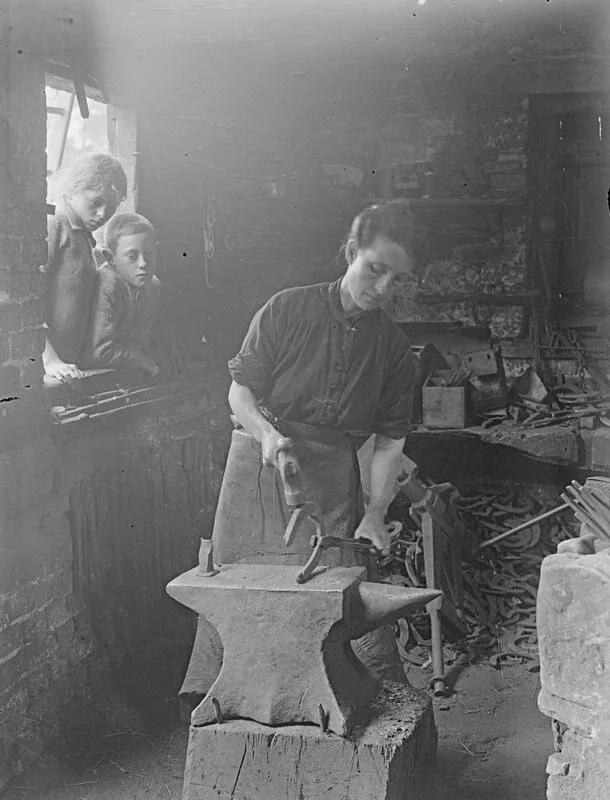SOFT IRON & STEEL
Manipulating Metals to create Function and art
Who is a blacksmith?
A blacksmith is a person who works with iron and steel. The blacksmith hammers hot iron on an anvil to change its shape. Blacksmiths make iron and steel tools. A smith is a person who works in metal. A blacksmith works with iron and steel. A thousand years ago, people only knew about seven metals (iron, gold, silver, copper, tin, lead, and mercury). By color: gold is yellow; copper is red; and silver, tin, lead, and mercury are different gray colors. Iron is also a gray color if you shine it, but usually its surface is covered with a black oxide, which is a kind of rust. This black color forms very fast in a blacksmith's fire. The other metals have light colors, but iron is a dark color, so it is called the black metal in English. A smith who works the black metal is a black-smith.
Forge
Forge Iron must be very hot to shape with a hammer. Hot iron becomes cold very soon. A blacksmith has only a few seconds to hammer a piece of iron, before it must be put back in the fire to become hot again. A forge is a special oven for metalworking. It burns coal or charcoal in a very hot fire. A bellows pushes air into the forge, to make the fire burn hotter. The blacksmith puts pieces of iron in the fire to make them hot.
Ways to hammer iron
There are a few ways to change a piece of iron's shape with hammer and heat. Here are the most important ways that a blacksmith uses:
Bending: hammering a piece of hot iron, to make it curve or to make it have a corner.
Drawing: hammering on the sides of a piece of hot iron, to make it longer and thinner.
Upsetting: hammering on the end of a piece of hot iron, to make it shorter and fatter.
Punching: A blacksmith hammers a punch through a piece of hot iron, to make a hole in the hot iron (A punch is a tool like a short stick of iron. The end of the punch is flat).
Cutting: hammering a chisel through the side of a piece of hot iron, to make two shorter pieces (A chisel is a tool like a short stick of iron. The end of the chisel is sharp to cut).
Splitting: hammering a chisel into the end of a piece of hot iron, to make a stick of iron into a "Y" shape, to make a fork.
Rivetting: a rivet is like a machine bolt with a head at both ends. Rivets are used to make different pieces of iron stay together. The blacksmith makes a hole in each piece of iron, where he wants the pieces to come together. A rivet is then put in the holes, and the blacksmith hammers on the rivet to make the heads at each end of the rivet.
Welding: making different pieces of iron become one piece of iron. The blacksmith makes the pieces of iron so hot that they almost melt. Then he puts the pieces together and hammers on them so there is no line where they came together. Welding is the hardest thing for a blacksmith to learn and to do.
Hard iron and steel
Iron is one of the 92 natural elements.
Steel is iron with a little carbon in it (0.3% to 1.7% carbon by weight).
All metals get harder when a smith hammers or bends them. This is called "work-hardening". If a smith hammers or bends a piece of metal that is already work-hardened, it will crack and break. To make work-hardened metal soft again, so that a smith can hammer and bend it more, the smith anneals the metal.
To anneal iron or steel, a blacksmith heats the metal until it no longer pulls a magnet, and then makes the metal become cold very slowly. Blacksmiths can cover the hot metal with sand, so that it takes hours to become cold. This makes iron or steel very soft.
Steel acts just like iron, until a blacksmith "heat-treats" the steel. This is a special way to make the steel hot and then cold, so that the steel will become hard enough to keep a cutting edge.
This article uses material from the wikipedia article Blacksmith



